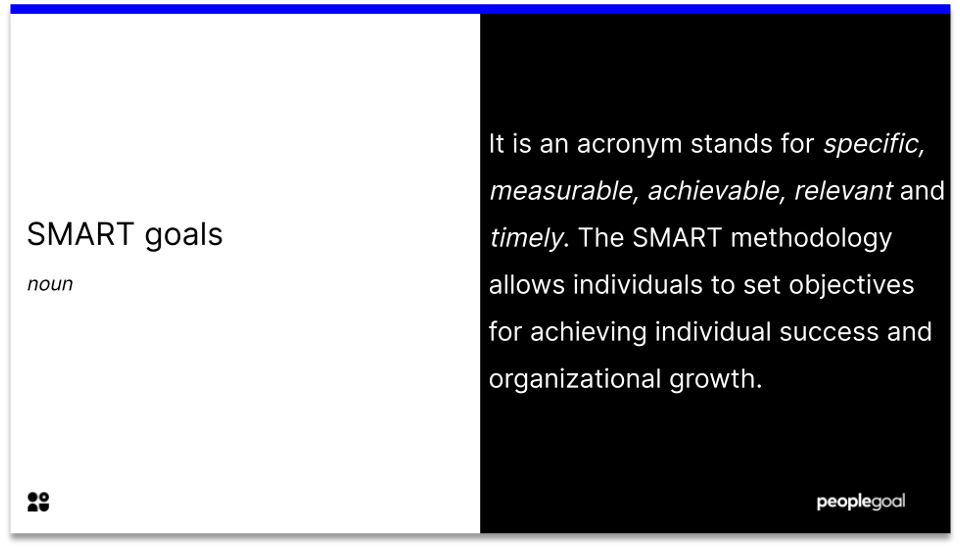When it comes to goal setting, SMART goals can make all the difference as to whether you and/or your team are achieving goals that are meaningful and have a real impact. Here we take a look at what the purpose of SMART goals is, why they are important and the benefits they can bring.
SMART goals – more than a mnemonic
The SMART in SMART goals is an acronym that stands for Specific, Measurable, Achievable, Relevant and Time-bound. The concept was first created by Peter Drucker in ‘Management by Objectives’. If you are setting goals for yourself or someone who works for you, it’s a great way to think and a proven way to help people in achieving goals.
When considering the purpose of smart goals it’s helpful to look at each element individually.

Specific means that the goal should be clear and directly related to your work or your desired end objective. It should contain as much information as relevant including the: who, what, why and how of the objective. If it isn’t specific, you will never be able to focus on what is important.
Measurable means that you should be able to objectively tell whether the goal has been achieved. A goal of winning a new client is measurable. A goal to make a prospective client like you is not. If you can’t definitively say whether a goal has been achieved, it’s easy to trick yourself into believing that you are achieving goals when you actually aren’t.
Achievable means that there is a realistic chance of achieving the goal. Setting a goal for a small start-up to make more money than Google in its first year of business is bold but eventually only demotivating.
Relevant means that the goal set is reasonable and related to a person’s skills, experience, role and ambition. Goal setting should be related to wider organisational goals. It has to be relevant to the person but also aligned with the general direction of the organisation. There’s no point in achieving a goal of becoming a qualified photographer if this skill has no wider benefit.
Time-bound means that there is a designated time-frame to achieving the goal. When it comes to reviewing whether the goal has been achieved, it makes it much easier. It can also reduce the risk of trivial day to day tasks getting in the way of achieving goals.
The pros and cons of SMART GOALS
SMART is a well-respected approach to goal setting and many people would recommend it for personal as well as professional goals. It is an approach that brings the focus, clarity and motivation that people can often neglect when goal setting.
The process of thinking about your goals to make sure they are SMART goals also helps people to genuinely consider the importance of each goal and makes it more significant to them. This can be particularly important in the workplace for long-serving employees who see goal setting as a tick-box process rather than a significant planning experience.
Once the concept of SMART goals has been introduced, it is easily grasped and requires little training or expensive tools to implement. This is a great benefit if you are introducing a new goal-setting process for your organisation or if you are looking to bring consistency to the way goals are set and measured throughout your business.
There are some potential drawbacks to SMART goals that can stop people from achieving their goals and which should be considered when goal setting. Using SMART goals has been criticised, for example, as being too inflexible and for stifling creativity. Well-crafted SMART goals shouldn’t have this effect but it is certainly something to keep in mind.
Head over to our Essential Guide to SMART Goals to learn even more about the history of SMART goals and how they can super-charge goal setting in your organization.
Ready to 3x Your Teams' Performance?
Use the best performance management software to align goals, track progress, and boost employee engagement.





